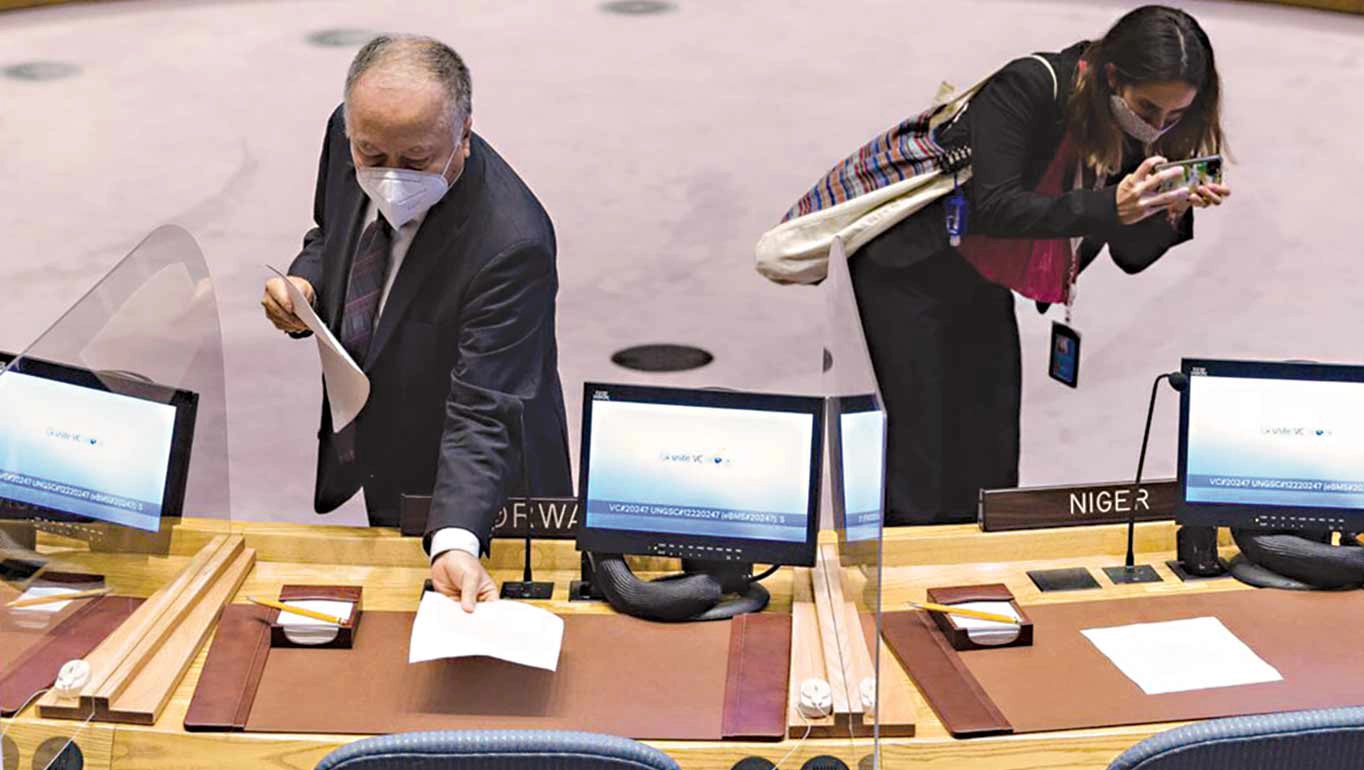Watch any meeting at UNHQ on the Webcast and the proceedings are flawless. Each delegate seated behind the proper nameplate, simultaneous interpretation at the touch of a button, keynote speakers from far-flung locations beamed in via VTC and crucial documentation appearing instantly upon demand. All of this fuels lively, yet disciplined debate. But behind this seamless display of multilateralism, is the Meetings Services Unit (MSU) and its 33-strong team of conference affairs officers.
MSU Chief Kefentse Ndonga leads that team. With a career spanning 12 years in meetings planning and coordination across the UN system, no one is more keenly aware of just how vital conference officers are. When it comes to ensuring that a multilateral gathering can conduct its business successfully, Kefentse knows that advance planning is everything. His staff examine a body’s mandate to understand meeting requirements. Which documents must they issue before the meeting begins? How many languages will be used? And consequently, how many sets of documents must be prepared for interpreters?
The team drafts a floor plan based on the body’s seating protocol. They liaise with the Secretariat and technicians to identify sound, lighting, and webcast requirements.
Such attention to detail cannot falter. Kefentse starts his morning checking in with his team to see if plans made long ago for that day’s meetings need to be altered. Meetings can be added or canceled last-minute, and conference officers must be added or reassigned accordingly. If meeting attendance has changed, floor plans may no longer be accurate. They are checked, and checked again. Only then are they sent to the Broadcast and Conference Support Section (BCSS). BCSS populates the digital nameplates and camera operators plan their shots. Kefentse’s precision is mirrored by every team member. Once at their assigned meeting, conference officers are fastidious overseers, running through a checklist before proceedings commence. They ask the Secretariat if the meeting scenario has changed and emphasize interpretation time limits. They verify that all documentation is in place. They check that BCSS technicians have their sound files, that the lighting is just so, and that the gavel is at the podium.
Tying all those threads together is a Herculean feat. For Kefentse, Security Council meetings are particularly tough. Its 15 members grapple with highly sensitive topics, from Ukraine to DPRK. MSU must liaise constantly with the Security Council Affairs Division, handle confidential documents with care and get them to the interpreters with speed. And doing all of this involves maintaining the trust of senior diplomats, themselves under intense pressure. Kefentse’s team must be ready to serve urgent meetings and toil late into the night. A work-life balance can prove elusive. Missions abroad pose further logistical challenges.
But it’s clear that Kefentse loves his job. And whilst he and his team perform constant behind-the-scenes wizardry, it’s the front-facing part of the role that really excites him. During High-Level Week the team liaises with Heads of States’ assistants to ensure world leaders convey their crucial message at that hallowed rostrum. All year round they welcome people from across the world to UNHQ. It might be their first, nerve-wracking visit to an international organization, and they will have tough work ahead. Kefentse describes his team as “the friendly face.” For him, it is a privilege to make sure delegates have what they need to make our world a better place. They may not be diplomats, but everything the conference officers do, from carrying ballot boxes to circulating the latest version of a draft resolution – with every comma exactly as it was last agreed – is a pivotal contribution to multilateralism.
Technology has changed the job of New York’s conference officers drastically since Headquarters opened in 1950. In 2014, Kefentse visited the World Bank, and business processes there inspired a shift towards digitization at UNHQ. Conference officers no longer push carts of brown nameplates to meeting rooms; digital nameplates are created in an instant. PaperSmart was launched, then succeeded by E-Statements in 2020. Instead of printing and circulating delegates’ statements in person, conference officers now upload them to that platform, saving time, paper and legwork. They upload background documents and working papers to SharePoint – another innovation. All of this means fewer staff and more remote working. Instead of moving stealthily through the room with reams of paper, conference officers are now often assigned in pairs to manage documents digitally from afar. The pandemic transformed the role. Overnight, meetings were pushed onto virtual platforms such as Kudo and Interactio. Kefentse’s team now also act as moderators and technicians in virtual settings. They create meetings, connect participants, and resolve technical glitches.
Kefentse is under no illusion: change will be a constant in MSU’s future. But so too will the devotion, commitment and professionalism of its conference officers.



